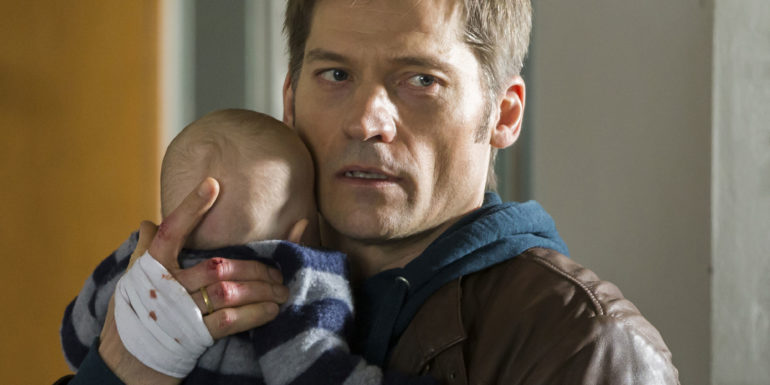Blame Ingmar Bergman. Blame the lack of sunlight. Blame Stieg Larsson. Whatever you pin it on, Scandinavia is in dire need of cheering up when it comes to its cinema output. The most joyous recent example of film from the Nordic countries just might be Headhunters, with its nonsensical plotting and multiple homicides. Perhaps it’s this dour filmmaking sensibility that allows Nikolaj Coster-Waldau to fit in so seamlessly amongst the incestuous insanity of TV’s Game of Thrones. He’s certainly a fine fit for the lead in A Second Chance (En Chance Til), a film that manages to take itself so seriously that it becomes deaf to its own soapiness. Even that title is soapy; it’s thematically relevant, but it’s so broad as to highlight the film’s contrivances.”
A Second Chance was director Susanne Bier’s second film of 2014. It’s also the better of the two, though that doesn’t count for much when the other film was Jennifer Lawrence/Bradley Cooper dud Serena. Bier’s films are concerned/obsessed with the efforts to which people go to lessen their isolation, whether through reconciliation or the pursuit of some kind of justice. Justice is on the minds of A Second Chance’s characters from the start, as vice detective Andreas (Coster-Waldau) leads a raid on the apartment of lowlife ex-con Tristan (Nikolaj Lie Kaas). During the raid, he discovers Tristan and his girlfriend’s (May Andersen) infant son lying crying in his own excrement. A less-than-subtle contrast is drawn between Tristan’s life and that of Andreas. Tristan’s abuses his girlfriend and neglects his son, while Andreas’ marriage to Anne (Maria Bonnevie) and their newborn son is idyllic. Compare the harsh city landscape Tristan inhabits, all blue hues and shaky cameras, to Andreas’ idyllic Ikea catalogue-aping lake house. Director of Photography Michael Snyman delivers some striking images (an opening credits crawl over a fog-enveloped bay is beautiful), but they serve only to contribute to A Second Chance’s thematic obviousness.
Bier and her frequent writing collaborator Anders Thomas Jensen hint at undercurrents of class division and social unrest, but the plotting of A Second Chance undermines their efforts every chance it gets. Having established Andreas’ idyll, the film then rips it apart by having his son suffer a cot death. Driven by grief, Andreas attempts a surreptitious baby swap by kidnapping Tristan’s son. How much you get out of A Second Chance depends on how much you’re willing to accept this and subsequent sub-Eastenders plot developments. The death and kidnapping all happens in the first act, with the film moving so fast that thematic considerations are given short shrift. It doesn’t help that the script doesn’t seem to like its characters enough to care what happens to them. The film visits misery after misery upon them; even Lars von Trier remembers to let his characters have a laugh on occasion. Perhaps the ethical considerations on offer might have rung more true had a little levity been offered; there’s only so much you can focus on when you’re surrounded by darkness.
Describing any more of the plot risks spoilers, but A Second Chance is riddled with twists and turns that sound like offcuts from a Coronation Street Christmas episode. The film is granted a semblance of watchability by its handsome visuals, and a committed cast. Led by a strong, conflicted turn from Coster-Waldau, the actors clearly care more about the characters they’ve been given than the filmmakers. The insistent misery of A Second Chance make it far too bitter a pill to swallow.

